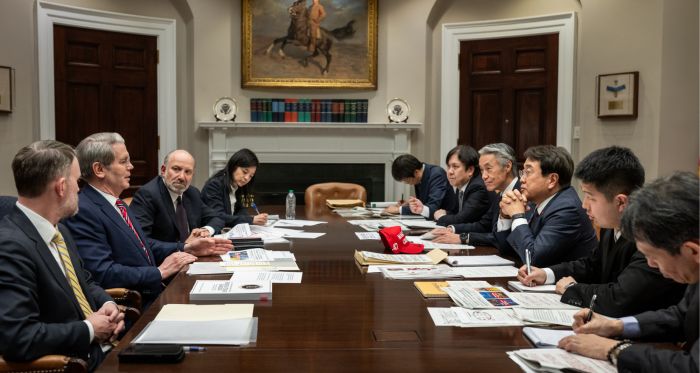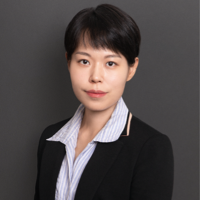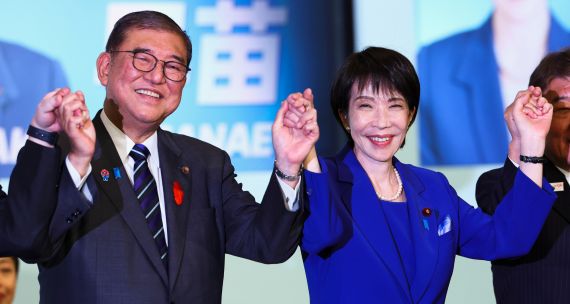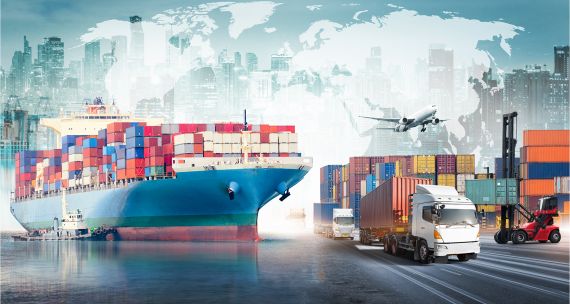In April, the United States imposed a baseline 10 per cent tariff on nearly all imports, with higher country-specific rates proposed for its major trade partners. Japan was hit hard: it faces a potential 24 per cent U.S. tariff on its exports beginning July 9 unless the two sides can reach an agreement before then.
A separate 25 per cent tariff on auto imports, along with the reinstated 25 per cent tariff on all Japanese steel products and the increase of aluminum tariffs to 25 per cent, have already taken effect, prompting Japanese Prime Minister Ishiba Shigeru to refer to these tariffs as a “national crisis” for the world’s fourth-largest economy.
Much like in U.S. President Donald Trump’s first administration, Japan is confronted with the challenge of protecting its economic interests while not destabilizing its alliance with the U.S. — an alliance that has been the cornerstone of peace, stability, and prosperity in the Indo-Pacific region. Tokyo’s response this time, however, reflects the lessons it learned during Trump’s first term, when its approach relied on ‘quiet diplomacy’ and selective concessions.
There is, of course, some continuity. Japan continues to emphasize investment (i.e. highlighting Japanese firms’ contributions to U.S. employment and manufacturing), avoid full-scale retaliation, and resist escalating rhetoric. However, there has also been a notable shift in tone and diplomatic tactics, even if the overarching objectives remain similar. Under Prime Minister Abe Shinzo (2012-20), Japan leaned heavily on personalized diplomacy and backchannel bilateralism, rarely confronting the U.S. publicly and consistently positioning itself as a co-operative security partner.
Ishiba, by contrast, does not enjoy the same personal rapport with Trump, and this has influenced a shift toward a more formal and institutional diplomatic strategy. Japan’s current approach includes greater co-ordination with other trading partners, a willingness to issue public criticism of U.S. trade measures, and an increased reliance on rules-based multilateralism as a framework for resistance. These changes reflect more than just a difference in leadership style: they signal a broader recalibration in response to the more aggressive and unpredictable nature of Trump’s second-term trade policy.
Japan’s strategy during ‘Trump 1.0’: Diplomacy and targeted concessions
Early in his first term, Trump withdrew the U.S. from the Trans-Pacific Partnership (TPP), a trade agreement that Japan had championed. Abe responded by pursuing personal diplomacy — becoming the first foreign leader to meet Trump after the 2016 U.S. presidential election — and by initiating the U.S.–Japan Economic Dialogue in April 2017 to manage bilateral economic frictions.
Nonetheless, the first trade clash came in March 2018, when Trump imposed 25 per cent tariffs on all steel and 10 per cent on all aluminum imports under Section 232 of the U.S.’s Trade Expansion Act, citing national security concerns. Notably, Japan was not granted an exemption. Initially, Tokyo exercised restraint, avoiding direct retaliation while continuing to seek exemptions through diplomatic channels. This ‘quiet diplomacy’ reflected Japan’s longstanding emphasis on prioritizing alliance stability and pursuing negotiation over confrontation.
However, two months later, as it became clear that the U.S. would not grant exemptions, Japan prepared to impose retaliatory tariffs on US$409 million worth of U.S. goods, equivalent to the estimated cost of the U.S. measures. Tokyo then formally notified the World Trade Organization (WTO) of its intent to suspend concessions.
In this context, suspending concessions signalled Japan’s plan to withdraw most favoured nation (MFN) treatment — an agreement wherein a country promises to treat another country’s imports no worse than it treats any other country’s imports — from selected U.S. products. This move was an unusual step for Japan, which until then had preferred patient negotiations. Japan did not end up imposing those counter-tariffs, but this episode marked a shift in its strategy for managing Trump’s trade pressure, indicating that Japan’s ‘learning’ process had already begun in Trump’s first term.
By mid-2018, Japan’s concerns over looming auto tariffs, which Trump described as a potential 25 per cent tariff on foreign cars, prompted Japan to begin bilateral trade talks with the U.S. In September 2018, the Abe administration agreed to negotiate a limited trade agreement to avoid further escalation. The talks culminated in the 2019 U.S.–Japan Trade Agreement, through which Japan promised to eliminate or lower tariffs for certain U.S. agricultural products. In return, Trump shelved the threat of auto tariffs, reassuring Japan that he would not hit its auto exports with Section 232 duties as long as the agreement remained in effect.
Essentially, Tokyo managed to protect its auto sector, which is vital to its economy, by opening its market just enough to placate Trump. Throughout the rest of Trump’s first term, Japan’s strategy combined diplomacy with selective concessions, as well as striking a friendly tone — Abe often highlighted Japanese firms’ investments in support of U.S. jobs to appease Trump — and giving ground where feasible, including by allowing more imports of U.S. beef and wheat. Indeed, U.S. beef exports to Japan rose from US$1.9 billion in 2017 to US$2.4 billion in 2021, representing a 26 per cent increase.
‘Trump 2.0’: Adjusting to a harsher trade environment
The reimposition of tariffs in Trump’s second term marks a more confrontational phase in U.S. trade policy. The 10 per cent baseline tariff on all imports enacted in April was accompanied by proposed reciprocal tariffs for countries with trade surpluses. Japan, with a US$63-billion surplus in 2024, was targeted with a potential 24 per cent “reciprocal” tariff.
Although implementation has been delayed until July 9, the 10 per cent baseline tariff is already in effect. Concurrently, a 25 per cent tariff on imported vehicles was implemented in April, followed in May by similar tariffs on key auto components.
Japan’s response to these tariff actions reflects tactical adjustments from its quiet diplomacy and selective concessions in Trump’s first term. A key change is leadership: Ishiba, who took office in late 2024, does not have the same personal rapport with Trump that Abe had. Rather, Japan’s diplomatic tone has become firmer and more sober. Ishiba and his ministers have publicly expressed “disappointment” and “serious concern” over Trump’s tariff decisions, albeit in measured terms. Moreover, Japanese officials are also openly questioning the legality and rationale of Trump’s moves, pointing out inconsistencies with WTO rules. Japan has not initiated retaliation in kind, while trade minister Muto Yoji said Japan must decide its course “in a careful but bold and speedy manner,” hinting at change in the country’s tone and strategy.
In response to the July 9 deadline, Japan dispatched top-notch trade negotiator Akazawa Ryosei to Washington for multiple rounds of discussions. In a phone call with Trump on May 23, Ishiba reiterated Japan’s position and linked tariff removal to broader economic and strategic co-operation. He also made clear that Japan would not accept disproportionate concessions, a stance shaped in part by domestic political pressures.
While Japan has avoided direct retaliation, it has also broadened its strategic response. In contrast to the primarily bilateral approach Japan took during Trump’s first term, Tokyo is now placing greater emphasis on co-ordination with other middle powers. One example is Japan's elevation of its relationship with Association of Southeast Asian Nations (ASEAN) to a Comprehensive Strategic Partnership in 2023, signalling a commitment to deeper economic and security co-operation as well. This partnership encompasses initiatives such as joint strategies on automobile production, supply chain resilience, and digital trade, reflecting a concerted effort to counterbalance external economic pressures.
In May 2025, Ishiba visited Vietnam and the Philippines, signalling Tokyo’s desire to “strongly anchor” itself in Southeast Asia. During the meetings, Japan reaffirmed the importance of strengthening bilateral trade ties in the region. Taken together, these developments underscore that Japan has pivoted toward diversified, multilateral partnerships aimed at enhancing regional resilience against unilateral trade actions.
Implications for Canada
Ultimately, Canada and Japan, as members of the Ottawa Group — an informal Canada-led coalition of like-minded WTO members established in 2018 — and other trade-focused coalitions, share an interest in defending the multilateral trading system while managing the consequences of unilateral U.S. actions.
So far, multilateralism has largely functioned as a coalition of discontents — states seeking to mitigate the effects of U.S. trade actions without directly confronting Washington. However, sustained U.S. unilateralism may accelerate deeper institutional co-operation at the regional level, particularly in forums where the U.S. is not actively involved or invited. If this trend continues, the global rules-based system the U.S. helped to build could begin to operate independently of it. Moreover, co-ordinated action among middle powers — through alternative trade pacts, joint standard-setting, or collective dispute mechanisms — could erode the U.S.’s ability to shape the rules of the global trading order.
For Canada, this presents both a challenge and an opportunity. On one hand, a weakening of U.S. centrality could introduce greater uncertainty for Canadian exporters. On the other hand, deeper co-ordination with like-minded partners — such as through the Ottawa Group, the Comprehensive and Progressive Agreement for Trans-Pacific Partnership, or the G7 — may enhance Canada’s ability to collectively push back against coercive trade tactics while reinforcing a more rules-based system aligned with its long-term interests.
• Edited by Vina Nadjibulla, Vice-President Research & Strategy, Erin Williams, Senior Program Manager, and Ted Fraser, Senior Editor, APF Canada





